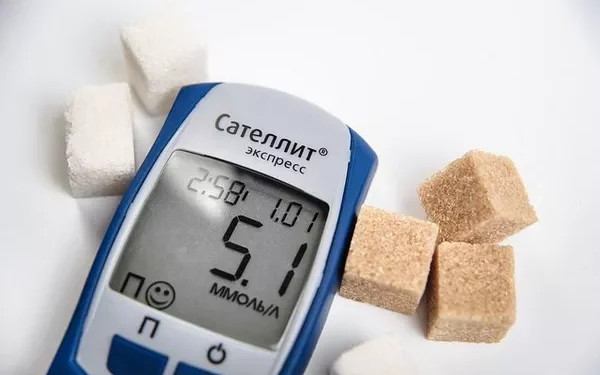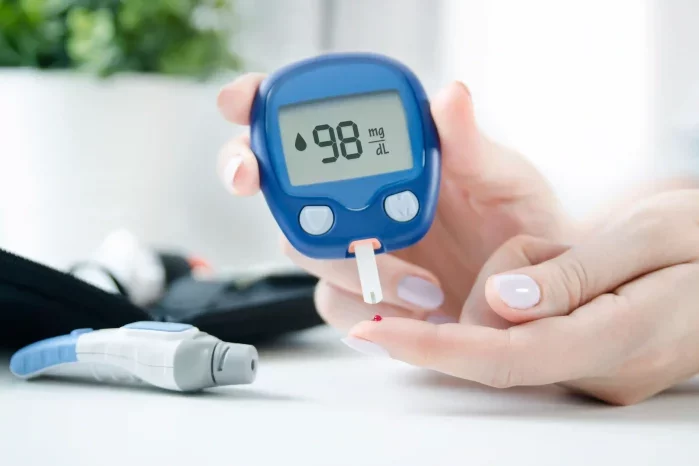Hypoglycemia refers to an abnormally low level of glucose in the blood, typically defined as a blood sugar level below 70 mg/dL. This condition is particularly concerning for individuals with diabetes, but it can also affect those without the disease. The brain relies heavily on glucose for energy, and inadequate levels can lead to a range of symptoms, from mild discomfort to severe neurological impairment.
Causes of Hypoglycemia
Several factors can contribute to hypoglycemia, including excessive insulin or oral diabetes medications, skipping meals, prolonged physical activity, alcohol consumption, and certain medical conditions. Understanding these causes is essential for preventing and managing hypoglycemia effectively.
The 3 P’s of Hypoglycemia
The “3 P’s” of hypoglycemia are polyphagia, polydipsia, and polyuria. While these symptoms are more commonly associated with hyperglycemia and diabetes, they can also be indicators of hypoglycemia. Each of these symptoms provides crucial insights into the body’s response to low blood sugar levels.
1. Polyphagia (Excessive Hunger)
Definition and Mechanism
Polyphagia refers to excessive hunger or increased appetite. In the context of hypoglycemia, this symptom occurs as the body’s attempt to restore normal blood glucose levels. When blood sugar drops, the body signals the brain that it needs more food to increase glucose levels and provide energy to cells.
Biological Response
The primary trigger for polyphagia in hypoglycemia is the brain’s response to low glucose levels. The hypothalamus, a region of the brain responsible for regulating hunger and energy balance, detects decreased glucose availability. This detection stimulates the sensation of hunger, prompting the individual to seek food intake urgently.
Clinical Presentation
Patients experiencing polyphagia due to hypoglycemia may report sudden and intense hunger. This hunger can be difficult to satiate, even after consuming food. Recognizing this symptom early is vital for preventing more severe hypoglycemic events, as it indicates the body’s immediate need for glucose replenishment.
Management Strategies
Managing polyphagia involves addressing the underlying cause of hypoglycemia. For individuals with diabetes, this includes careful monitoring of blood glucose levels, appropriate timing of meals and snacks, and adjustment of medication dosages. Education on recognizing early signs of hypoglycemia and having quick-acting carbohydrates available, such as glucose tablets or juice, is essential.
2. Polydipsia (Excessive Thirst)
Definition and Mechanism
Polydipsia is characterized by excessive thirst and increased fluid intake. While it is more commonly associated with hyperglycemia, it can also be a symptom of hypoglycemia. In hypoglycemia, polydipsia occurs as a compensatory response to the body’s need to maintain blood volume and circulation when glucose levels are low.
Biological Response
The sensation of thirst is regulated by the hypothalamus in response to various physiological cues, including blood osmolarity and volume. In hypoglycemia, the body may trigger thirst as a mechanism to encourage fluid intake, which can help support blood circulation and maintain blood pressure.
Clinical Presentation
Individuals with hypoglycemia-induced polydipsia may report an overwhelming urge to drink fluids, often beyond normal hydration needs. This excessive thirst can be accompanied by other symptoms of hypoglycemia, such as sweating, shaking, and confusion. Recognizing polydipsia as a potential sign of hypoglycemia is crucial for timely intervention.
Management Strategies
Addressing polydipsia involves treating the underlying hypoglycemia and ensuring adequate hydration. Individuals with diabetes should be educated on the importance of balanced fluid intake and monitoring their blood sugar levels regularly. In cases of severe hypoglycemia, medical intervention may be necessary to stabilize blood glucose levels and manage hydration.
3. Polyuria (Frequent Urination)
Definition and Mechanism
Polyuria refers to the production of abnormally large volumes of urine. In the context of hypoglycemia, polyuria can occur as the body attempts to excrete excess glucose through urine when blood sugar levels fluctuate. Although more typical in hyperglycemia, hypoglycemia-induced polyuria can be an early warning sign of glucose dysregulation.
Biological Response
The kidneys play a crucial role in regulating blood glucose levels by filtering excess glucose from the blood and excreting it through urine. When blood sugar levels drop significantly, the kidneys may initially attempt to conserve glucose, leading to changes in urine production. In hypoglycemia, the body’s efforts to balance glucose levels can sometimes result in increased urine output.
Clinical Presentation
Patients experiencing polyuria due to hypoglycemia may notice frequent urination, often accompanied by other symptoms such as dizziness, sweating, and weakness. This frequent urination can lead to dehydration if fluid intake does not match the increased urine output. Early detection of polyuria as a symptom of hypoglycemia is essential for preventing complications.
Management Strategies
Managing polyuria involves stabilizing blood glucose levels and maintaining proper hydration. Individuals with diabetes should be encouraged to monitor their blood sugar levels closely and adjust their fluid intake accordingly. In cases of recurrent or severe polyuria, healthcare providers may need to reassess the patient’s diabetes management plan and consider additional interventions.
Recognizing and Managing Hypoglycemia
Early Signs and Symptoms
Recognizing the early signs and symptoms of hypoglycemia is crucial for preventing severe hypoglycemic events. In addition to the 3 P’s, other common symptoms of hypoglycemia include:
- Shakiness or tremors
- Sweating
- Dizziness or lightheadedness
- Confusion or difficulty concentrating
- Irritability or mood changes
- Weakness or fatigue
- Headache
- Blurred vision
Causes and Risk Factors
Several factors can increase the risk of hypoglycemia, including:
- Excessive insulin or oral diabetes medication
- Skipping or delaying meals
- Prolonged or intense physical activity
- Alcohol consumption, especially on an empty stomach
- Certain medical conditions, such as adrenal insufficiency or hypothyroidism
Understanding these causes and risk factors can help individuals and healthcare providers develop strategies to prevent hypoglycemia.
Prevention Strategies
Preventing hypoglycemia involves a combination of lifestyle modifications, medication management, and regular monitoring of blood glucose levels. Key prevention strategies include:
Consistent Eating Schedule: Eating regular meals and snacks can help maintain stable blood glucose levels and prevent drops in blood sugar.
Balanced Diet: Consuming a balanced diet with appropriate portions of carbohydrates, proteins, and fats can support glycemic control.
Medication Management: Working closely with healthcare providers to adjust medication dosages and timing can help prevent hypoglycemia.
Physical Activity: Incorporating regular physical activity into the daily routine while monitoring blood glucose levels can improve insulin sensitivity and prevent hypoglycemia.
Monitoring Blood Glucose Levels: Regular monitoring of blood glucose levels can help detect early signs of hypoglycemia and guide treatment decisions.
Treatment of Hypoglycemia
Immediate treatment of hypoglycemia involves consuming fast-acting carbohydrates to quickly raise blood sugar levels. The “15-15 Rule” is a commonly recommended approach:
Consume 15 grams of fast-acting carbohydrates: This can include glucose tablets, fruit juice, regular soda, or candy.
Wait 15 minutes and recheck blood sugar levels: If blood sugar levels are still low, repeat the process until levels stabilize.
Follow with a balanced meal or snack: Once blood sugar levels have stabilized, consuming a balanced meal or snack with carbohydrates and protein can help maintain stable glucose levels.
In severe cases of hypoglycemia, where the individual is unable to consume carbohydrates orally, emergency medical treatment with glucagon or intravenous glucose may be necessary.
The Role of Healthcare Providers
Patient Education
Educating patients about the signs, symptoms, and management of hypoglycemia is essential for empowering them to take control of their condition. Healthcare providers should provide clear instructions on recognizing early signs of hypoglycemia, monitoring blood glucose levels, and responding appropriately to low blood sugar episodes.
Regular Monitoring and Follow-Up
Regular monitoring of blood glucose levels and follow-up appointments with healthcare providers are crucial for assessing glycemic control and making necessary adjustments to treatment plans. This ongoing monitoring can help prevent hypoglycemia and identify any patterns or triggers that may contribute to low blood sugar episodes.
Personalized Treatment Plans
Diabetes management should be tailored to the individual needs of each patient. Healthcare providers should consider factors such as age, lifestyle, comorbidities, and preferences when developing treatment plans. A personalized approach can improve adherence and outcomes.
See also: 6 Things You Should Look For to Identify Hypoglycemia
Conclusion
Hypoglycemia is a potentially dangerous condition characterized by abnormally low blood glucose levels. The “3 P’s” of hypoglycemia—polyphagia (excessive hunger), polydipsia (excessive thirst), and polyuria (frequent urination)—are critical symptoms that can indicate glucose dysregulation. Recognizing these symptoms early and taking appropriate action is essential for preventing severe hypoglycemic events.
Managing hypoglycemia involves a comprehensive approach that includes adherence to medication, regular monitoring of blood glucose levels, dietary modifications, incorporating physical activity, addressing concurrent illnesses and medications, and adjusting treatment plans as needed.
Healthcare providers play a crucial role in educating patients, monitoring their progress, and developing personalized treatment plans to achieve optimal glycemic control. By addressing the factors that contribute to hypoglycemia and supporting patients in their diabetes management, it is possible to improve outcomes and enhance the quality of life for individuals with diabetes.
Related topics:
What Can Cause Hypoglycemia Besides Diabetes


























